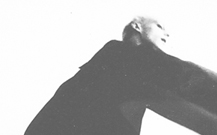Fast-Forward
Matthew Hawkins has recently begun to be published as a dance writer. His chronicles usually contain autobiographical elements....
Three Cyrils in one day
In Paris I go to ballet classes at a studio in the vibrant Faubourg Saint Denis quarter. Staggering out into the light, after the strenuous pursuits, I can confront and stash nature's abundance (groceries) amid the local riot of Arab-run veg' emporia and Turkish deli's. A prior bonus is the presence of Cyril: surname unknown (I'll call him Cyril the First)........
Great Clue and Great Love
Paris' winter can get bitter and this year it took us all unawares. Visitors stood out by their lightly-clothed demeanor. Amid the collective cowering only a hardy soul, or perhaps a preoccupied one would bumble along the quaysides, throat bared to the elements. Robert Swinston is one such and a New Yorker. My decision to accost and greet him leads to.........
Injury Diary
....... suddenly I know everything. There is an egg-like swelling at the exact fracture point of a few years back. Calculation and salvage; I know exactly where in the wings to find the shoes I discarded earlier. They will help 'bind' the foot. They do not accessorise well with the bits of costume I am currently in; it will not be a good look for the orgy scene - but.........
Dame Ninette
Ninette De Valois was a wicked beauty who pranced in plumes and chiffon........ as to why the persona 'Dame Ninette' still seems to wield esoteric power, one might search for clues and alight on the phenomenon of convulsion. So much of her genius was........
Summer School
This item revolves around the ballet master Enrico Cecchetti and his influence on dance - that unscientific art form........
For a dialogue about these and other essays please contact Matthew directly via contact@matthewhawkinsdance.co.uk |


